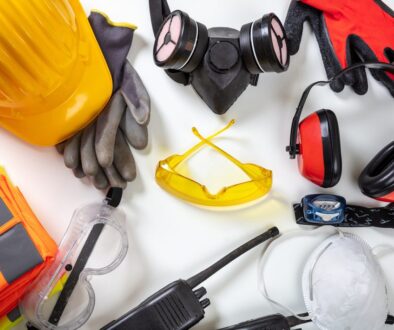Préparer votre communauté à l’agitation sociale : Comment les solutions technologiques peuvent aider
2020 has certainly proven to be a difficult year for many across the United States. Between the coronavirus pandemic, severe weather threats, and nationwide social unrest, state and local governments have had to adapt to these unprecedented times to keep their communities safe.
In recent months, the world saw peaceful protests regarding racial injustice in the United States that then, unfortunately, lead to riots, violence, and vandalism. With a huge election looming, security experts have predicted the possibility of renewed large-scale social unrest throughout the country. Prior attacks on businesses and government buildings have sparked fear, which is why many state and local public safety officials are hoping for the best but are preparing for the worst in the days before and after the presidential election.
What Solutions are State and Local Governments Leveraging to Prepare?
Preparing for social unrest amid these trying times requires coordination and collaboration between several state and local agencies and must include plans for businesses and schools, which may be voting locations in different cities and towns. Could technology solutions help in aiding preparedness, response, and mitigation? The answer is yes.
Mass Notification Software
Mass notification solutions have been a crucial public safety technology tool for government leaders to quickly get important messaging out to residents. Although simply getting alerts out is what mass notification technology is typically known for, several features could be extremely useful for leaders preparing for civil unrest.
For areas within a community that may be impacted, such as downtown and urban city areas, it’s recommended to set up SMS opt-in keywords specific to these geotargeted locations. Residents and business owners can then opt-in to detailed messaging for that area and receive timely and critical updates.
Many volunteers have chosen to work at several voting locations throughout towns and cities, which is why leveraging mass notification with polling capabilities is extremely useful. Administrators can create specific contact lists for those volunteering and send out automated or scheduled wellness check-ins, which can be done with a simple polling link. This link would open a multiple-choice question, encouraging volunteers to then select the appropriate response, and, if in danger, administrators can solicit location tracking to send help.
Campus Safety Apps
Colleges and universities have kindly offered up their spaces as polling locations and some may have campus safety technology in place that could protect polling station volunteers, such as a campus safety app. State and local leaders must coordinate with these higher education institutions to allow volunteers to download and utilize the app to keep them safe.
A campus safety app has two-way chat functions – either anonymous or not – which would allow volunteers to report any suspicious activities or intimidation they may encounter. The app also has an emergency call button, which would give volunteers the ability to reach 9-1-1 immediately if they were to find themselves in danger.
Mobile Panic Buttons
Many K-12 schools have also offered their facilities as polling locations. Government leaders can work with school districts to temporarily add volunteers and election workers to a panic button app, which could be uploaded in bulk and be set up as a custom group to receive any relevant internal communications. Administrators can also easily schedule check-ins for volunteers at polling locations, at outlying stations for support, within public access buildings, and more.
With the push of a button, users can simultaneously communicate internally about an emergency and contact 9-1-1 and first responders with detailed location data and critical information about the emergency. A panic button application has buttons for medical emergencies, active assailants, fire, and more.
Building Facility Profiles
For any at-risk buildings, creating detailed facility profiles is crucial to protecting not only the property but everybody who may be within the property – such as polling station volunteers. Within a facility profile, business owners or schools can include the following information:
- Points of contact and property owner information
- How to best access gates or buildings in an emergency
- Fire and security alarm locations and contacts
- Campus boundaries including parking lots and other outdoor areas
- Floor plans and other important building information
- Utility information and shutoff locations for buildings
- And more!
Functional Needs Registries & Public Safety Apps
State and local agencies must promote the use of both functional needs registries and public safety apps within the community, especially with worries of social unrest.
Community members can receive location-based alerting by downloading a public safety app, such as Smart911. That way, if there is a specific area of unrest, those in the area will receive an alert to help them stay safe. Within the app, users can also include crucial information about members of the household, address and location information, critical medical conditions, and other notes they may want first responders to know. When placing a call to 9-1-1 this profile will be available to the 9-1-1 dispatcher who can then relay any information that may help emergency responders when arriving at the scene.
Encouraging residents to also provide key details such as age, location, and preexisting conditions through an online portal within a functional needs registry will give public safety agencies and emergency managers an accurate view of their community. With this information, emergency managers can easily identify residents who may be at-risk or require assistance, communicate with them, and send help if needed.
Leveraging different technologies and tools could be extremely useful in the coming weeks, especially when it comes to protecting businesses, schools, election volunteers and the rest of the public.





